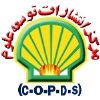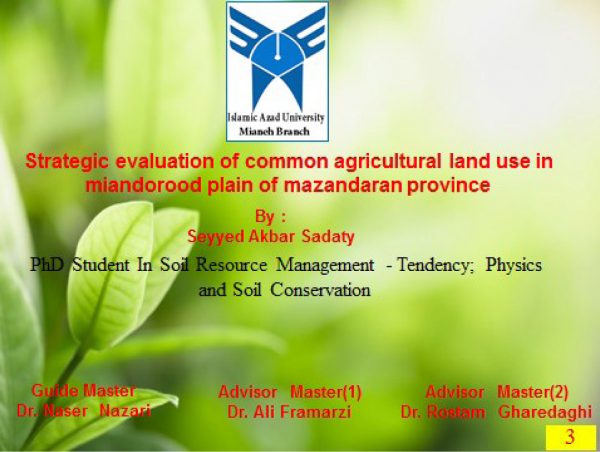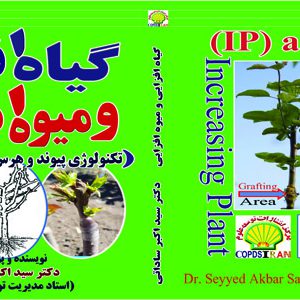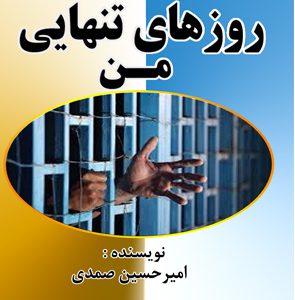The effect of conventional cultivation strategy on soil resource instability in the upstream area Miandorood of Mazandaran
این مقاله به تمام ابعاد اجتماعی، سیاسی و اقتصادی نگاه فنی و راهبردی دارد.
توضیحات
عنوان مقاله : The effect of conventional cultivation strategy on soil resource instability in the upstream area Miandorood of Mazandaran

چکیده مقاله سوم از رساله دکترای تخصصی استخراج شده :
The effect of conventional cultivation strategy on soil resource instability in the upstream area Miandorood of Mazandaran
Abstract
In general, the climate of each region is undoubtedly an important factor in determining the architectural or civilization form of that region. Therefore, familiarity with the different climates of Iran, including the target area of the study, will have a significant impact on our decision making success. Soil operation, tillage, and sustainability of the effective components in the upstream crop need to address the weaknesses and threats of the target area due to erosive bedding to standard crop of need action. Therefore, this study was conducted for the first time in the upstream area (base mountain areas) of Miandorood Mazandaran in order to provide appropriate information on economizing the process of work (standard practice principle). Hence, first, the effect of conventional strategy operations over time on the physical and chemical process of the soil was investigated. For this reason, 10-year data on soil main textural components including clay%, silt% and sand% as well as soil organic carbon content (OC%) Was obtained from the research area targeted by the research centers. After detailed information on the soil process, the economic trends of the area’s arable lands in terms of econometric (B / C) ratio have been analyzed during the mentioned period (2010 -2019) and the agricultural economic trends have been analyzed. So, the 10-year upstream information trend indicates that conventional agronomic status with the principle of unity of scientific practice in soil stability of arable area such that soil clay content ranged from 34% to 25% and silt content from 31%. To 27% and the amount of sand in the soil has changed from 35% to 48%. In this research study, soil organic carbon content decreased from 2.72% to 0.87% and finally interest rates on agricultural expenditure decreased from 2.41% to 0.78%. With the decrease in profit ( benefit to Cost) of the area, the target of the study indicates the non-economic and soil instability of the area. For this purpose, the preferred model for solving the research area problem is the Strategic Model, WOTS-UP Analysis and its subsets. This research is a descriptive-analytical study with field approach (survey) and its statistical population are the main components and subsystems within and outside the system (IFE & EFE) in the area of upstream soil resource sustainability. The case study has been applied and practical solutions have been presented to the trustees for stabilization of agricultural soils and economization.
Keywords: Upstream Areas, Strategic Management, Benefit to Cost, Convergence Effect, Soil Sustainability
استاد راهنما: دکتر ناصر نظری- استادیار گروه علوم خاک، واحد میانه، دانشگاه آزاد اسلامی، میانه، ایران.
استاد مشاور(اول): دکتر علی فرامرزی-استادیار گروه زراعت و اصلاح نباتات، واحد میانه، دانشگاه آزاد اسلامی، میانه، ایران.
استاد مشاور(دوم): دکتر رستم قره داغی- استادیار گروه مدیریت، واحد میانه، دانشگاه آزاد اسلامی، میانه، ایران.






دیدگاهها
هیچ دیدگاهی برای این محصول نوشته نشده است.